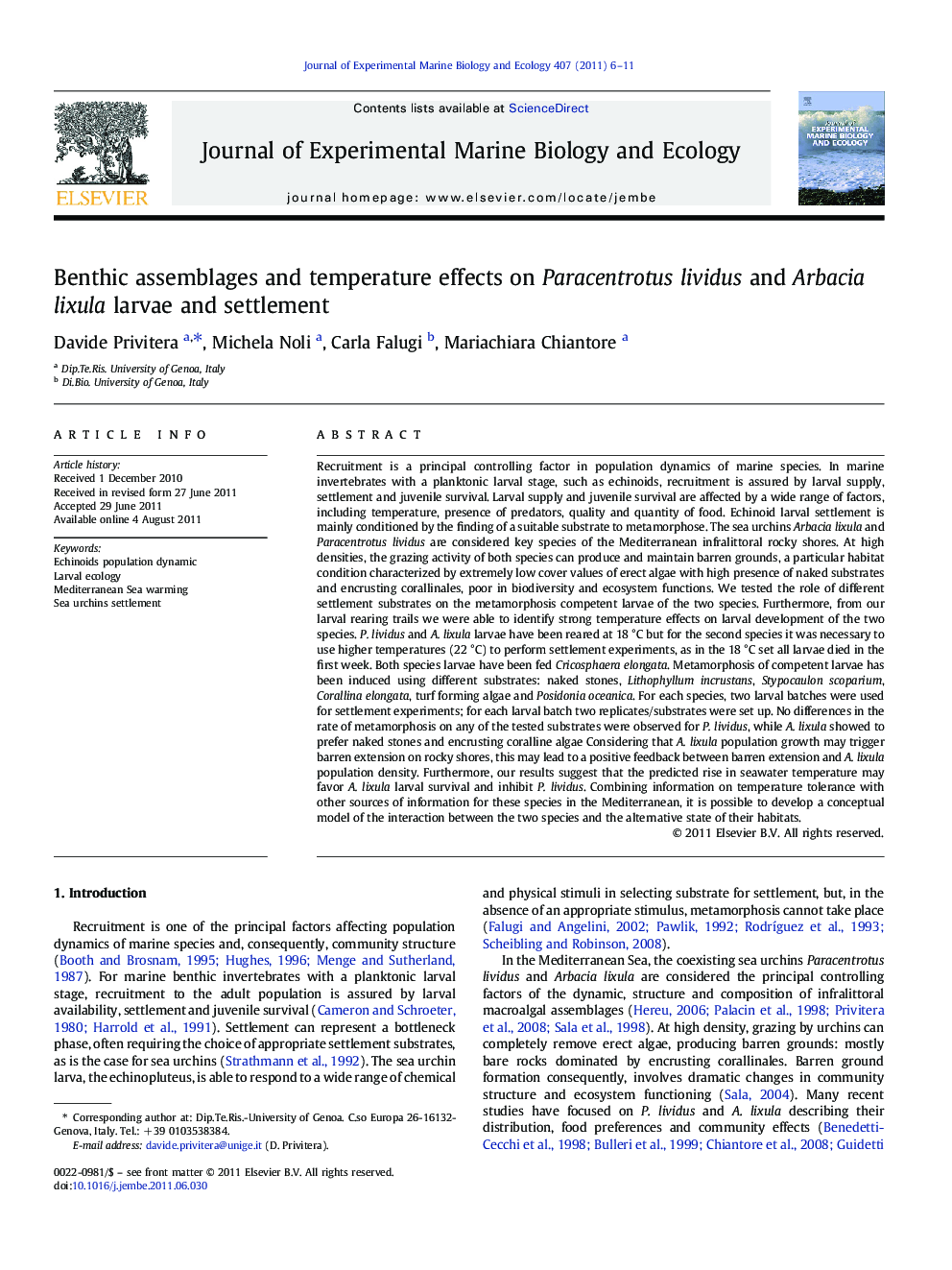| کد مقاله | کد نشریه | سال انتشار | مقاله انگلیسی | نسخه تمام متن |
|---|---|---|---|---|
| 6304521 | 1305811 | 2011 | 6 صفحه PDF | دانلود رایگان |

Recruitment is a principal controlling factor in population dynamics of marine species. In marine invertebrates with a planktonic larval stage, such as echinoids, recruitment is assured by larval supply, settlement and juvenile survival. Larval supply and juvenile survival are affected by a wide range of factors, including temperature, presence of predators, quality and quantity of food. Echinoid larval settlement is mainly conditioned by the finding of a suitable substrate to metamorphose. The sea urchins Arbacia lixula and Paracentrotus lividus are considered key species of the Mediterranean infralittoral rocky shores. At high densities, the grazing activity of both species can produce and maintain barren grounds, a particular habitat condition characterized by extremely low cover values of erect algae with high presence of naked substrates and encrusting corallinales, poor in biodiversity and ecosystem functions. We tested the role of different settlement substrates on the metamorphosis competent larvae of the two species. Furthermore, from our larval rearing trails we were able to identify strong temperature effects on larval development of the two species. P. lividus and A. lixula larvae have been reared at 18 °C but for the second species it was necessary to use higher temperatures (22 °C) to perform settlement experiments, as in the 18 °C set all larvae died in the first week. Both species larvae have been fed Cricosphaera elongata. Metamorphosis of competent larvae has been induced using different substrates: naked stones, Lithophyllum incrustans, Stypocaulon scoparium, Corallina elongata, turf forming algae and Posidonia oceanica. For each species, two larval batches were used for settlement experiments; for each larval batch two replicates/substrates were set up. No differences in the rate of metamorphosis on any of the tested substrates were observed for P. lividus, while A. lixula showed to prefer naked stones and encrusting coralline algae Considering that A. lixula population growth may trigger barren extension on rocky shores, this may lead to a positive feedback between barren extension and A. lixula population density. Furthermore, our results suggest that the predicted rise in seawater temperature may favor A. lixula larval survival and inhibit P. lividus. Combining information on temperature tolerance with other sources of information for these species in the Mediterranean, it is possible to develop a conceptual model of the interaction between the two species and the alternative state of their habitats.
⺠We studied metamorphosis of P. lividus and A. lixula larvae on different substrates. ⺠P. lividus larvae did not show any substrate preference to settle. ⺠A. lixula larvae selectively settle over calcareous algae or naked stones. ⺠The larvae of the two urchin species have different temperature preferences. ⺠Positive feedback between A. lixula density and barren areas extension is suggested.
Journal: Journal of Experimental Marine Biology and Ecology - Volume 407, Issue 1, 15 October 2011, Pages 6-11